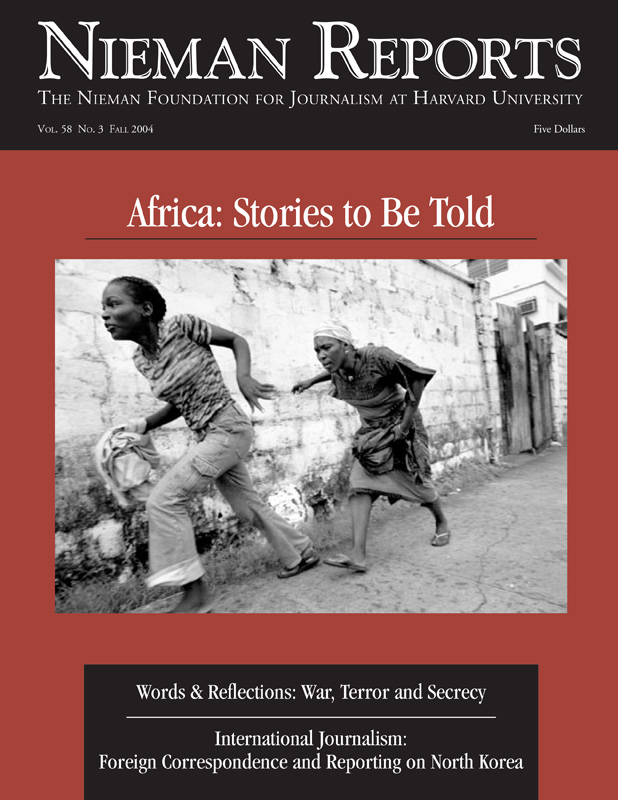While I was photographing a rally at the University of Liberia in support of three jailed journalists, then-President Charles Taylor sent armed soldiers and police to disperse the students. On film I’d captured the brutality the security forces used against the students, but then some plainclothes officers demanded that I hand over my camera. When I refused, they knocked my camera to the ground and destroyed it. I was beaten and accused of being an enemy of the government. The pictures of what I’d witnessed were gone.
This wasn’t the only incident in which, as a news photographer, I was physically attacked and my equipment confiscated. Sadly, it became a familiar ritual on many of my assignments. Journalists worked like this in Liberia, as each day’s assignment presented a fresh challenge of survival. To do our job, we braved death threats by state security officers as we tried to photograph moments and actions that would make real what was happening for those who would see our images. Journalists could never be sure they would be alive to cover the next assignment.
During the past 15 years, my skills as a photojournalist and commitment to journalism have been tested. These were times in Liberia’s history that demanded endurance and courage to pursue the truth. Like a few other Liberians who believed that the war for power, wealth and greed needed to stop, I faced dangers and continued to work until I—and others—reached a limit where we could carry on no more.
We went to places where others dared not go, such as into territory where rebel forces opposed to President Taylor were advancing from the country’s northern border with Guinea. Locals were afraid to speak with me or the reporter with whom I traveled, and the government security forces in the area did not trust us. One evening we started to hear sporadic gun sounds and saw villagers leaving, not wanting to get caught in the crossfire. At government checkpoints we’d mingle with the crowd and listen to internally displaced people tell their stories to the soldiers. More than 5,000 people were huddled at one checkpoint with nowhere to go. They couldn’t remain in their villages, but the soldiers were not allowing them to pass through, accusing them of having rebels amongst them.
The soldiers would not allow photographs to be taken, so I moved away from the crowd to document this scene. I passed each finished roll to my reporting colleague, who by then had befriended a villager. By the time the soldiers confiscated my camera, the exposed film was safe, and our new friend led us through trails to the next town.
In time, some of us, including me, fled our country because of serious attempts on our lives by state security. Now we hope for change. Threads of that hope are found in the work we did and what we envisioned we can do once we have freedom.
Gregory H. Stemn is a Liberian photojournalist working as a freelancer in the United States.
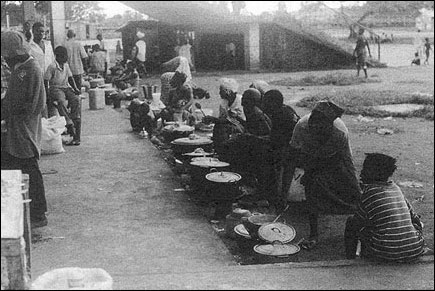
Displaced people at the Samuel K. Doe Sports Complex in Bong County, Liberia, 2003.
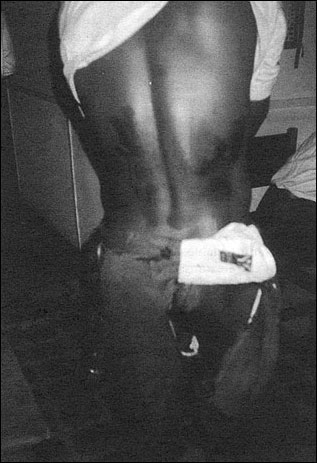
A University of Liberia student was beaten by armed soldiers of then-President Charles Taylor at a rally in March 2001 in support of three jailed journalists.
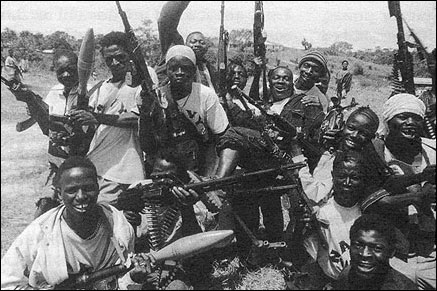
Some of Charles Taylor's armed forces in Bong County.
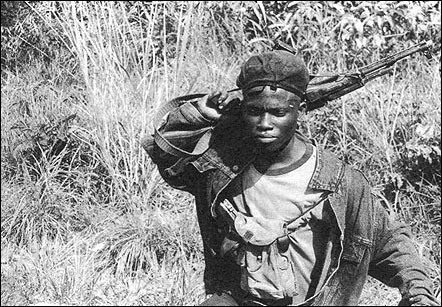
One of Charles Taylor's soldiers, 2001.
This wasn’t the only incident in which, as a news photographer, I was physically attacked and my equipment confiscated. Sadly, it became a familiar ritual on many of my assignments. Journalists worked like this in Liberia, as each day’s assignment presented a fresh challenge of survival. To do our job, we braved death threats by state security officers as we tried to photograph moments and actions that would make real what was happening for those who would see our images. Journalists could never be sure they would be alive to cover the next assignment.
During the past 15 years, my skills as a photojournalist and commitment to journalism have been tested. These were times in Liberia’s history that demanded endurance and courage to pursue the truth. Like a few other Liberians who believed that the war for power, wealth and greed needed to stop, I faced dangers and continued to work until I—and others—reached a limit where we could carry on no more.
We went to places where others dared not go, such as into territory where rebel forces opposed to President Taylor were advancing from the country’s northern border with Guinea. Locals were afraid to speak with me or the reporter with whom I traveled, and the government security forces in the area did not trust us. One evening we started to hear sporadic gun sounds and saw villagers leaving, not wanting to get caught in the crossfire. At government checkpoints we’d mingle with the crowd and listen to internally displaced people tell their stories to the soldiers. More than 5,000 people were huddled at one checkpoint with nowhere to go. They couldn’t remain in their villages, but the soldiers were not allowing them to pass through, accusing them of having rebels amongst them.
The soldiers would not allow photographs to be taken, so I moved away from the crowd to document this scene. I passed each finished roll to my reporting colleague, who by then had befriended a villager. By the time the soldiers confiscated my camera, the exposed film was safe, and our new friend led us through trails to the next town.
In time, some of us, including me, fled our country because of serious attempts on our lives by state security. Now we hope for change. Threads of that hope are found in the work we did and what we envisioned we can do once we have freedom.
Gregory H. Stemn is a Liberian photojournalist working as a freelancer in the United States.

Displaced people at the Samuel K. Doe Sports Complex in Bong County, Liberia, 2003.

A University of Liberia student was beaten by armed soldiers of then-President Charles Taylor at a rally in March 2001 in support of three jailed journalists.

Some of Charles Taylor's armed forces in Bong County.

One of Charles Taylor's soldiers, 2001.
